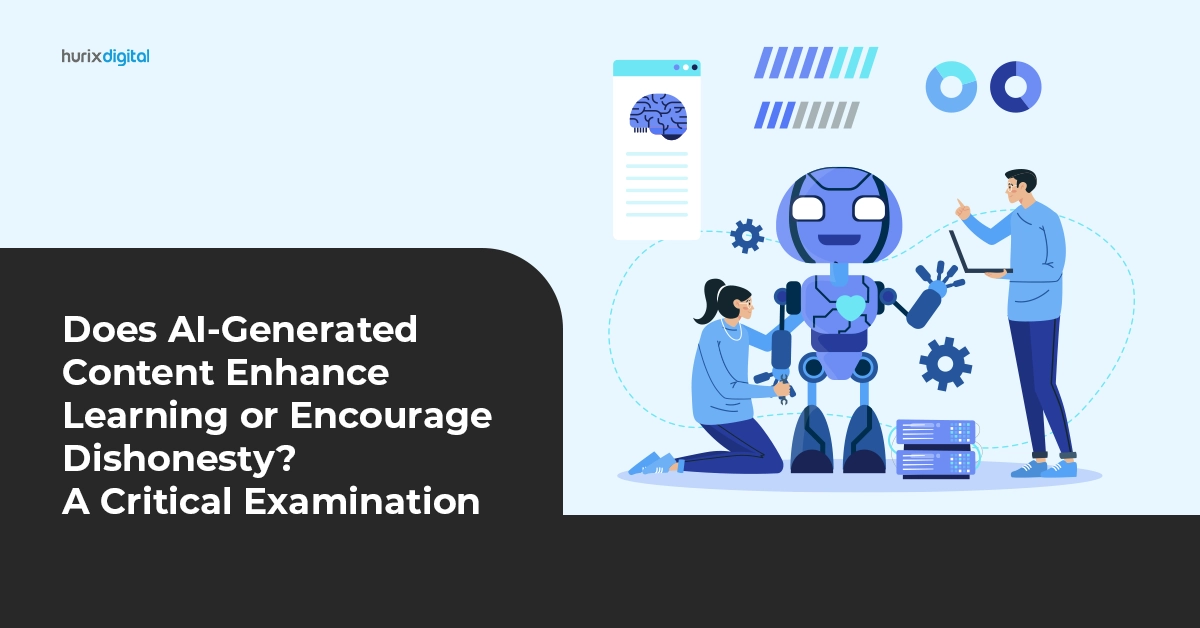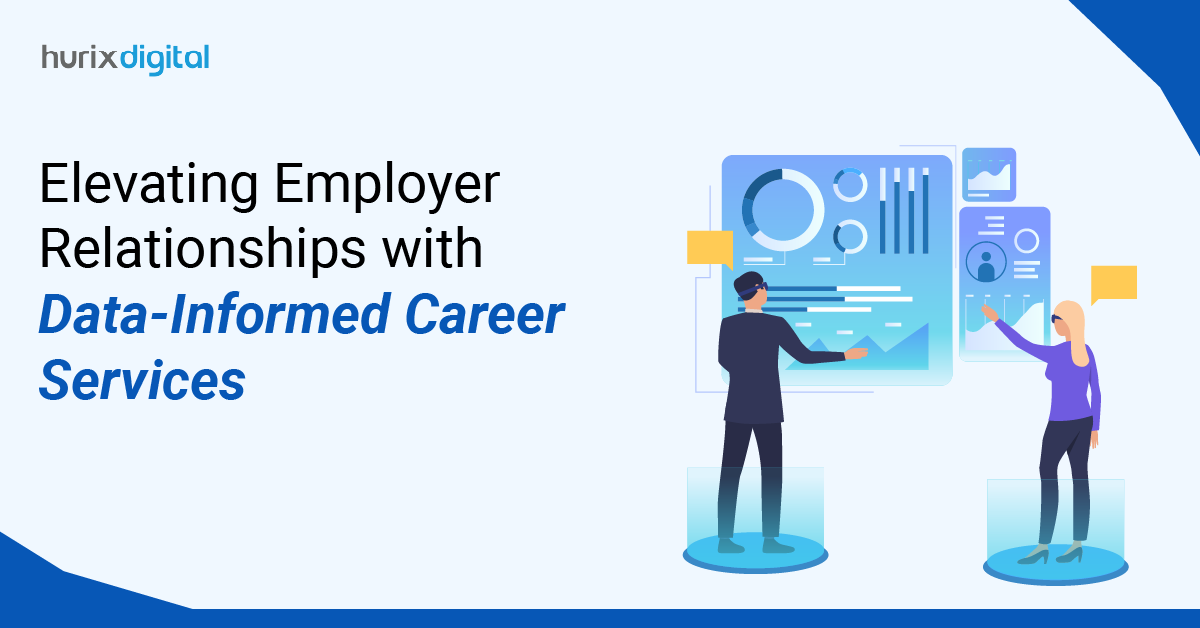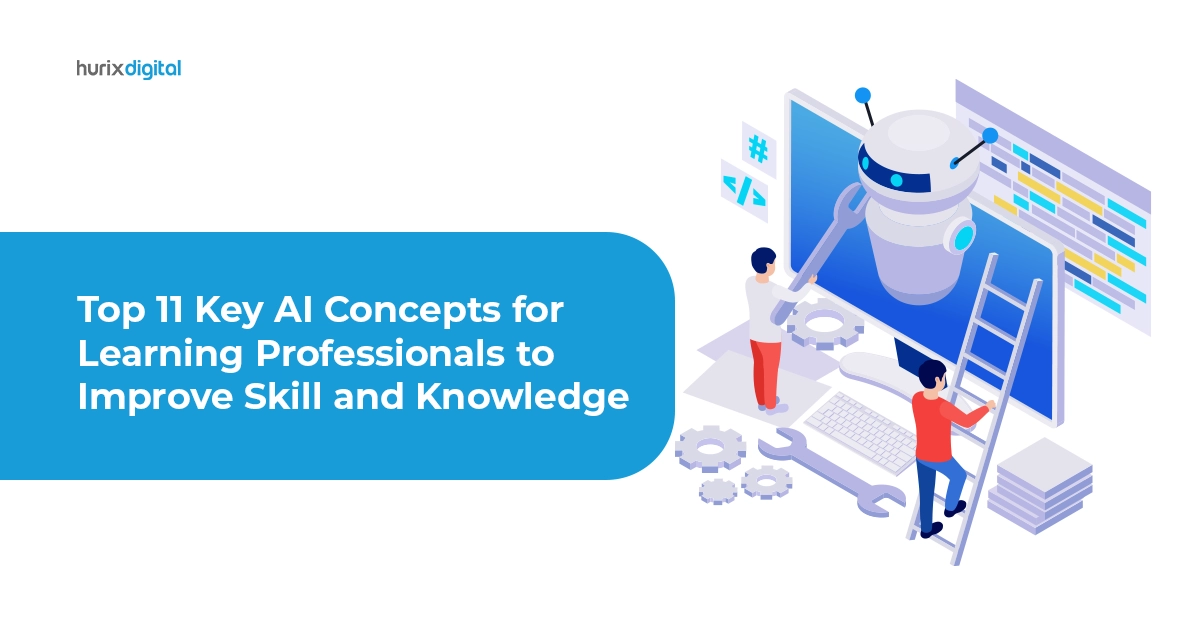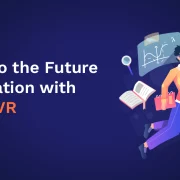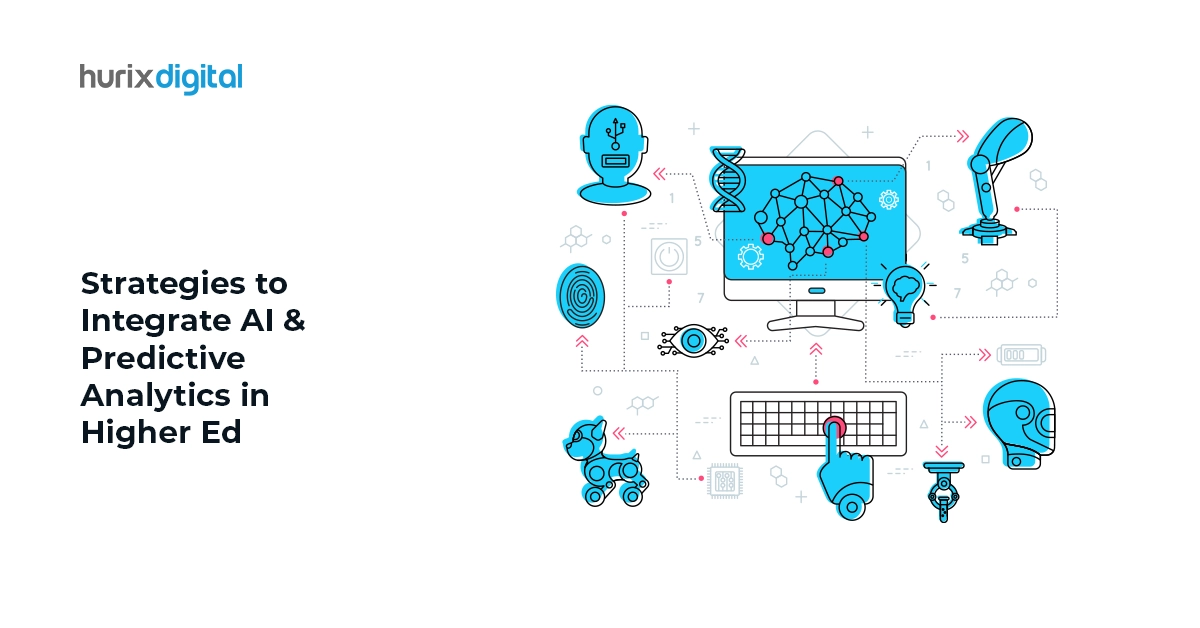
Strategies to Integrate AI & Predictive Analytics in Higher Ed
Summary
This post outlines strategies for integrating AI and predictive analytics in higher education. Approaches like leveraging data for student success predictions, enhancing personalized learning are discussed.
The higher education landscape has undergone monumental changes in recent years, with digitalization, immersive experiences, remote learning, and more.
Crafting effective methods for teaching and learning has long been a challenge for educators across the world, mainly because each individual learner is different, with a unique set of problems, strengths, and weaknesses, which can rarely be catered to in traditional classroom settings.
With the latest advances in artificial intelligence (AI) and predictive analytics, this could very well be changing, and we could see a renewed approach to higher education emerge. In this article, we try to peek inside what this future could look like.
Table of Contents:
- What is AI & Predictive Analytics?
- Benefits of Integrating AI & Predictive Analytics
- 7 Strategies for Curriculum Integration to Explore in 2024
- Challenges & Considerations to Check Out
- Wrapping Up
What is AI & Predictive Analytics?
Artificial Intelligence is simply the term used to describe computer programs that can reason independently and carry out tasks that would typically require human intelligence. This covers everything, from YouTube’s recommendation system to ChatGPT.
In contrast, predictive analytics employs machine learning and statistical methods to determine the probability of future events.
Predictive analytics and artificial intelligence working together can unearth a multitude of useful insights that will be extremely valuable for use cases in higher education.
Also Read: Top 6 Ways AI is Transforming the Education System for the Better in 2024!
Benefits of Integrating AI & Predictive Analytics
Both AI and predictive analytics bring a host of benefits to the higher education space; this compounds a lot higher when they converge and start working together.
Here are the top benefits:
1. Personalized Learning
AI algorithms can analyze student data to understand learning habits and preferences, allowing educators to customize materials and teaching strategies.
No two students are of the same caliber, and the biggest problem with higher education is that it fails to provide a common ground from which all learners can pick things up and get started. This results in unequal outcomes that become pronounced throughout students’ lives and careers.
2. Efficiency & Automation
By automating repetitive chores like grading and answering student questions, faculty members can concentrate more time on teaching and research.
Teachers spend a lot of precious time on chores that can be automated or assigned to someone else. More in-person time and contacts between students and professors are highly beneficial, and this facilitates the same.
3. Enhanced Student Support
With the use of predictive analytics, teachers can quickly intervene to support children who are at risk of falling behind and help them achieve.
Students, instructors, and administrators may all know precisely where things stand and what kind of assistance is needed to bring things back into line if they have the correct benchmarks to work against.
4. Data-Driven Decision-Making
Institutions can make well-informed decisions on curriculum modifications, resource allocation, and student services with improved analytics.
Even today, the vast majority of curriculum-related decisions at higher education institutes are made ad hoc, without any data backing them up. The entire process is a string of trials and errors, leaving students at a disadvantage when things fail to pan out well.
7 Strategies for Curriculum Integration to Explore in 2024
Here are the top strategies for integrating AI & predictive analytics into higher education:
1. Design Your Curriculum with AI and Predictive Analytics in Mind
To provide a solid foundation for your curriculum’s AI and predictive analytics integration, think about including basic courses that go over the fundamentals of data science, machine learning, and AI ethics.
The next step is to proceed to more specialized schooling, which offers advanced courses with increasingly sophisticated AI algorithms, big data analytics, and other subjects.
Think of taking an interdisciplinary approach by promoting the incorporation of analytics and AI in non-tech domains like business, sociology, and biology, to name a few.
2. Develop the Knowledge and Skills of Your Faculty
Your teachers must stay knowledgeable about the newest educational techniques and technological advancements.
To that end, think about holding frequent workshops, training sessions, and other types of ongoing professional development programs that impart the finest analytics and AI techniques.
3. Upgrade Your Infrastructure and Resources
You can reap the benefits offered by AI and predictive analytics only when you have the infrastructure to handle them.
For the best use of artificial intelligence (AI) and the insights provided by analytics, make sure your organization does not cut corners when it comes to modern computer labs furnished with the newest hardware and software.
4. Engage Your Students in Research and Practical Applications
Urge students to work on capstone projects that use AI and predictive analytics to solve real-world issues. These assignments can produce creative solutions and are essential for putting academic knowledge to use in real-world situations.
5. Address Ethical Considerations in Your Curriculum
Ensure that discussions on the ethical implications of AI and data usage are a staple in the curriculum.
Preparing students to make conscientious decisions in their professional lives is crucial as AI technologies become increasingly prevalent in various sectors.
6. Empower Your Faculty Through Ongoing Development
Consider regular training sessions that can help your faculty stay abreast of the latest technologies and teaching methodologies.
Partnering with tech companies and inviting guest lecturers from the industry can provide practical insights and enhance teaching quality within your institution.
7. Boost Your System for Successful Education
To promote hands-on learning, invest in cutting-edge computer labs furnished with the newest hardware and software.
MOOCs and other online learning resources can be used to supplement conventional instruction and provide flexibility.
Challenges & Considerations to Check Out
Integrating AI and predictive analytics isn’t without its challenges, which need to be well understood before proceeding.
1. Data Privacy
Because both AI and predictive analytics depend on vast volumes of data to work well, data privacy becomes increasingly important.
It is crucial to follow particular procedures when working with such massive volumes of data to guarantee that the security and privacy of the information are maintained. This is especially true when working with data that pertains to thousands of students.
All firms that go digital should follow the many guidelines and best practices that support cybersecurity, which is a broad and ever-evolving field in and of itself.
2. High Costs of Technology
These expensive technologies have the potential to increase the gap between the affluent and the impoverished.
The gap between the affluent and the poor is already growing, yet elite universities can afford to provide their students with the greatest technology, facilities, and AI-infused education. This is not the case for second-tier universities.
3. Continuous Training
Keeping pace with technology requires regularly investing in training your students and faculty with the latest technology and gadgets. This substantially increases the overall cost of operations and needs to be planned for.
Issues like data privacy, the high expense of technology, and the requirement for ongoing staff training must be addressed. It’s also important to mix tech-focused education with critical thinking and creative problem-solving abilities.
The digital divide adds another level of difficulty to the situation by potentially preventing less fortunate pupils from reaping the full benefits of education integrated with AI. Institutions need to make sure that everyone has fair access to new technology to keep the socioeconomic divide from growing.
Also Read: Top 10 AI-Based Assessment Tools for Higher Education in 2024
Wrapping Up
Educational institutions need to change with technology to be relevant and to influence how people study and innovate in the future actively.
Universities may improve student outcomes, expedite operations, and give students highly sought-after skills for the workforce by adopting these technologies. This is about leading the way toward a world that is smarter and more informed, not merely keeping up with the times.
If your educational institution wants to jump on this trend, team up with Hurix Digital. We can assist you in smoothly integrating these technologies into your current curriculum and achieving positive results for both teachers and students by providing cutting-edge AI solutions.
Get in touch with our team now!

Currently serving as the Vice President of Technology Delivery Operations at HurixDigital, a prominent global provider of digital content and technology solutions for publishers, corporations, and educational institutions. With over 16 years of experience spanning EdTech and various domains, I hold certification as a SCRUM Product Owner (CSPO). My expertise includes operations, finance, and adept people management skills.
